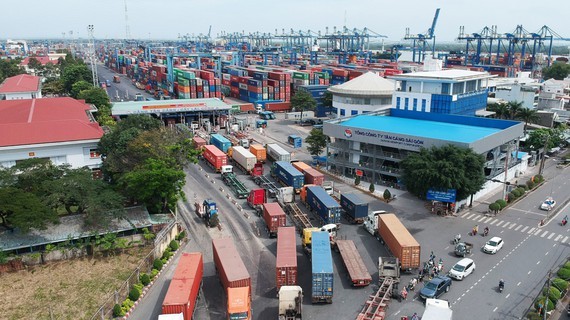
According to the municipal Department of Transport, HCMC’s seaport system with four main ports of Cat Lai on Dong Nai River, Nha Be on Nha Be River, Saigon on Saigon River and Hiep Phuoc on Soai Rap River and the largest total amount of goods plays a key role in connecting the maritime transportation system of the South-eastern region and the Mekong Delta.
Besides this, there are dry ports, customs inspection areas, container Freight Stations (CFS) and bonded warehouses. Most of facilities locate inside the city.
Cat Lai container terminal covering on an area of 160ha holds 38.5 percent of import and export container volume in the country, listed in the top 30 container ports with the largest volume in the world. The port is at risk of overload due to the high amount of containers, heavy traffic congestion on the roads around the port.
Revenue from collecting fees from businesses and individuals for use of infrastructure facilities and public services at seaport terminals for import-export activities will be used to upgrade transport infrastructure system and invest in technology and services. Activities for charitable purposes, disaster relief, disease, security and defense works will be free of charge, said the municipal Department of Transport.
The Port Authority of Inland Waterway will take responsibility for collecting fees with the support and inspection of the HCMC Department of Customs, port and logistics firms.
The department expects to start collecting infrastructure fees at seaports from July 1-31, 2021 in Cat Lai Port; and from August 1 in the same year at all port in the city.
The transport infrastructure development project in HCMC in the 2020-2030 period has been approved by the Standing Board of the HCMC Party Committee. The total investment capital of transportation is estimated at VND 970,654 billion (US$41.8 billion). Nearly VND477, 704 billion (US$20.5 billion) will be from the city’s budget while the remaining will be raised from the Central budget, the official development assistance (ODA) and Public–Private Partnership (PPP).
























